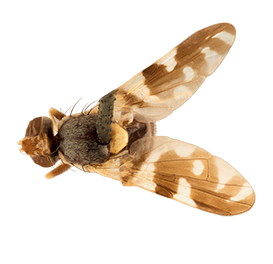Diagnosis
Morphological – adult
Thorax and abdomen predominantly black; abdomen with no transverse pale stripes, scutellum pale except for small dark lateral spots, wing with posterior and anterior apical cross-bands, distal and preapical cross-bands broadly joined. In wing pattern alone, R. fausta is unique among North American Rhagoletis in combining a very broad connection between the discal and subapical bands in cell dm with the presence of both an anterior and posterior apical band.
Morphological – larvae
Information not available.
Molecular
DNA barcoding
Diagnostic BOLD reference data available.
PCR-RFLP Test 1
BsrI: Data not available
HinfI: Data not available
HhaI: Data not available
Sau3AI: Data not available
SnaBI: Data not available
SspI: Data not available
Vspl: Data not available
PCR-RFLP Test 2
Data not available
Gallery
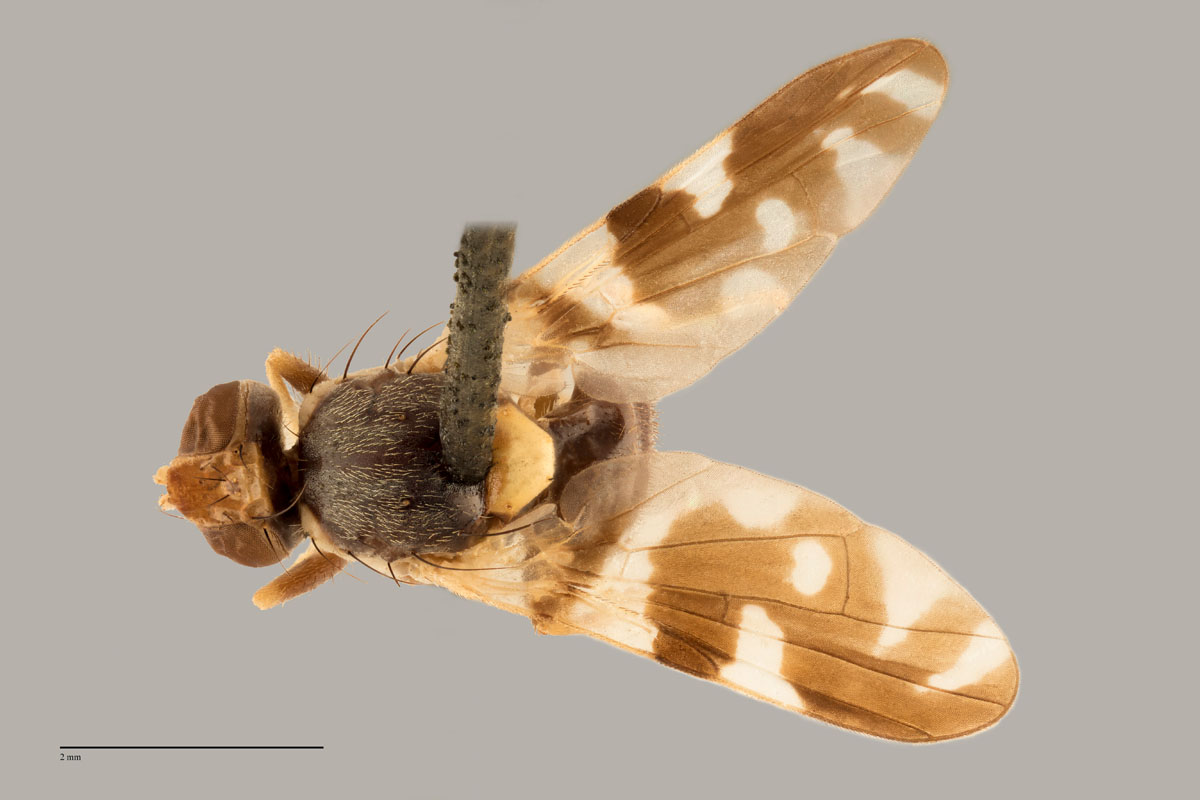 link
linkRhagoletis fausta - Entire Body Dorsal Classic FAU001
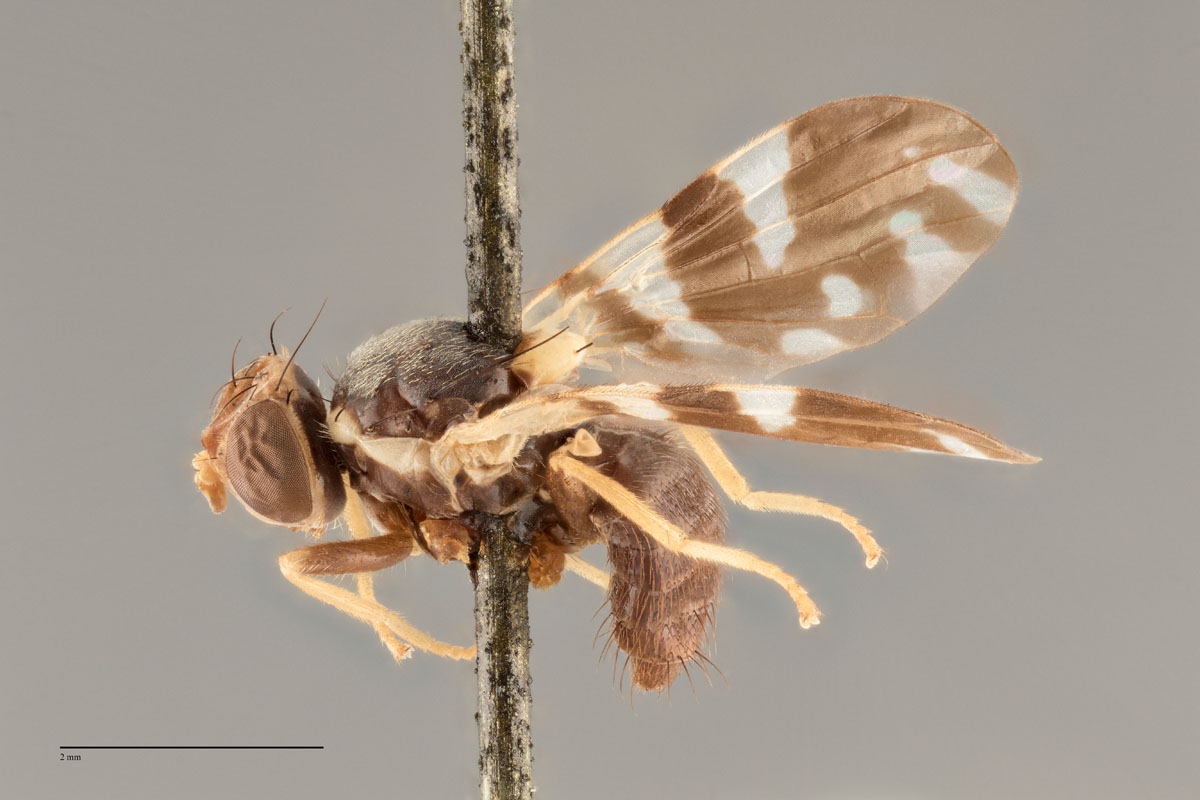 link
linkRhagoletis fausta - Entire Body Lateral Classic FAU001
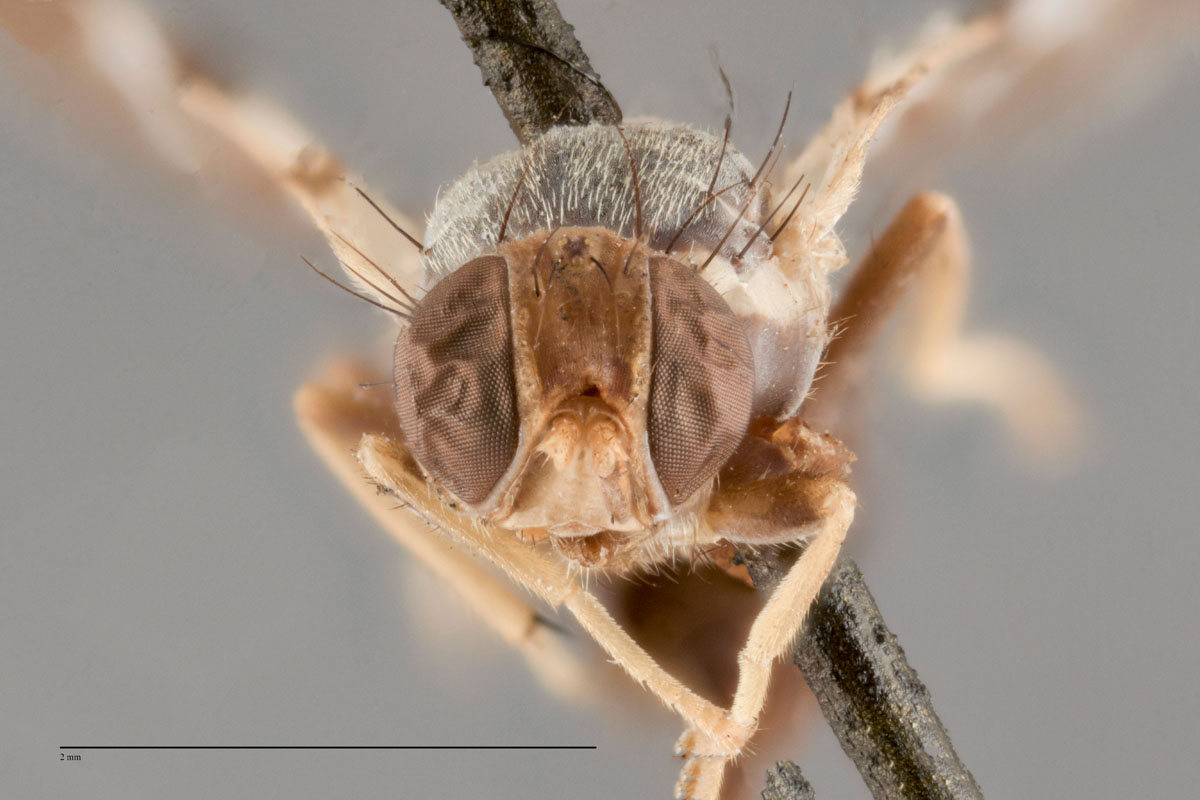 link
linkRhagoletis fausta - Head Classic FAU001
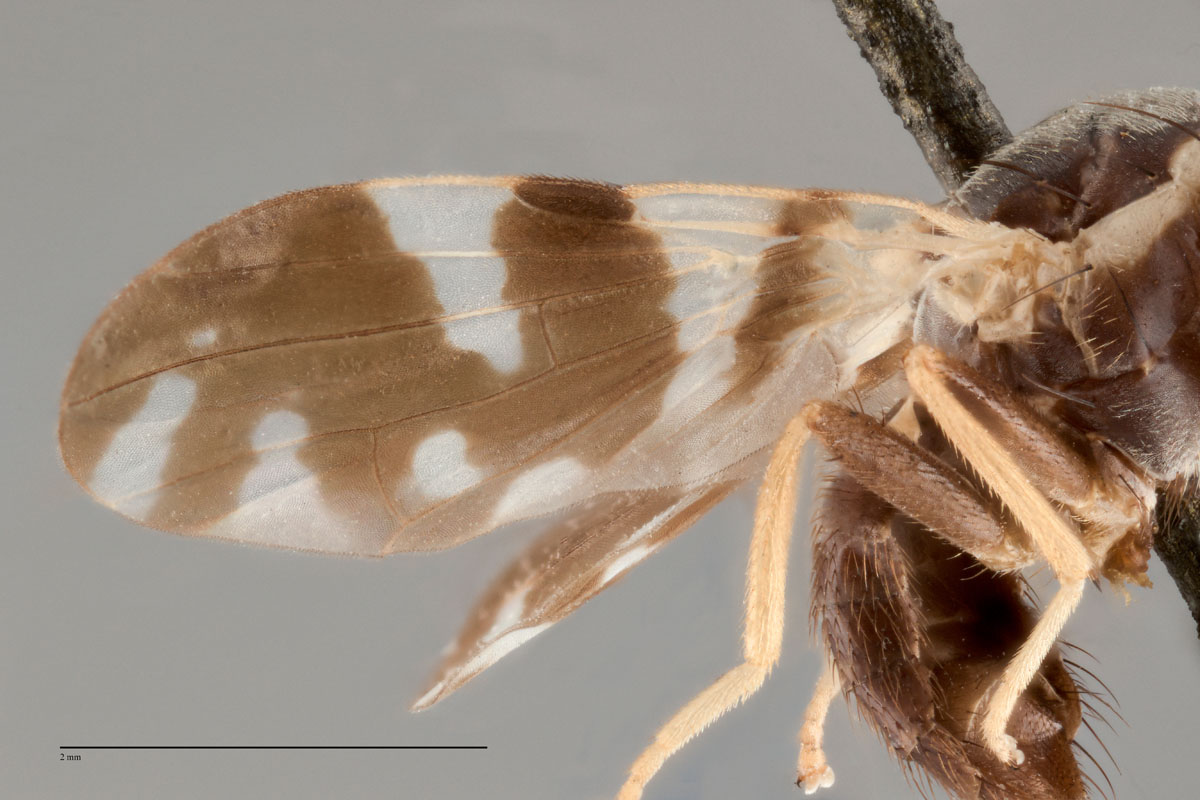 link
linkRhagoletis fausta - Wing Classic FAU001
Host Range
Rhagoletis fausta has been recorded on hosts from the Rosaceae family, primarily from Prunus species (for a full list of recorded hosts see CABI 2007).
Major commercial hosts:
- Prunus avium (sweet cherry)
- Prunus cerasus (sour cherry)
Distribution
Widespread occurrence in western and eastern North America (United States and Canada) (CABI 2007). Distribution in the USA is widespread, however this species is absent from several states; the map as presented does not represent true geographic distributions within the USA and Canada.
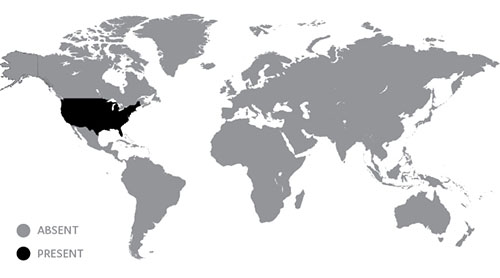
Similar species
Rhagoletis fausta is very close to R. striatella in that the posterior apical band in both species arises from the subapical band in the vicinity of vein r-m, making an F-shaped pattern in the apical half of the wing similar to that in the pomonella group (however, in the latter, note that the subapical band is missing and the apical bands are connected to the discal band).
In wing pattern alone, R. fausta is unique among North American Rhagoletis in combining a very broad connection between the discal and subapical bands in cell dm with the presence of both an anterior and posterior apical band, the latter arising in much the same location as in R. striatella. In R. striatella, the discal and subapical bands are separate or connected only along the posterior wing margin.
In many respects, the wing pattern of R. fausta resembles that of R. suavis, but R. fausta has both anterior and posterior apical bands and an isolated hyaline spot in the distal half of cell cua1. Rhagoletis suavis has a yellowish body; that of R. fausta is black and without yellowish bands at the posterior margins of the abdominal terga (Foote et al. 1993).
Pest Status
- Exotic
- Rhagoletis fausta is an important pest of cherries in North America
Attractant/Lure
No known record, but can be captured in traps emitting ammonia.
